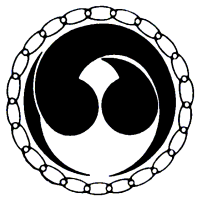Yakuza, also known as gokudō, are members of transnational organized crime syndicates originating in Japan. The Japanese police and media by request of the police, calls them bōryokudan, while the yakuza call themselves ninkyō dantai. The English equivalent for the term yakuza is gangster, meaning an individual involved in a Mafia-like criminal organization. The yakuza are known for their strict codes of conduct, their organized fiefdom nature and several unconventional ritual practices such as yubitsume or amputation of the left little finger. Members are often described as males, wearing "sharp suits" with heavily tattooed bodies and slicked hair. This group is still regarded as being among "the most sophisticated and wealthiest criminal organizations".

The Sixth Yamaguchi-gumi is Japan's largest yakuza organization. It is named after its founder Harukichi Yamaguchi. Its origins can be traced back to a loose labor union for dockworkers in Kobe before World War II.

The Sumiyoshi-kai (住吉会), sometimes referred to as the Sumiyoshi-rengo, is the second-largest yakuza group in Japan with an estimated 4,200 members.

Kazuo Taoka was one of the most prominent yakuza godfathers.

The Toa-kai is a yakuza syndicate based in Tokyo with a predominantly Zainichi Korean membership. Originally named the Tosei-kai, with its historic leader Hisayuki Machii, the Toa-kai was deeply involved in the history of Tokyo's South Korean community and Japan's anti-communist circles in the 20th century.
Kenichi Shinoda, also known as Shinobu Tsukasa, is a Japanese Yakuza, the sixth and current kumicho of the Yamaguchi-gumi, Japan's largest yakuza organization.

The Kudo-kai is a yakuza group headquartered in Kitakyushu, Fukuoka on the Kyushu island of Japan, with an estimated 220 active members. The Kudo-kai has been a purely independent syndicate ever since its foundation, and has caused numerous conflicts with the Yamaguchi-gumi.
The Kokusui-kai (國粹会), founded in 1958, is a Tokyo-based yakuza organization with an estimated 1000 members. Despite its relatively low membership, it is widely viewed as a wealthy and successful gang, controlling Tokyo's fashionable Ginza district. Its oyabun, or godfather, was Kazuyoshi Kudo until his suicide in February 2007.
The Nakano-kai (中野会) was a notorious Osaka-based yakuza gang, founded by Taro Nakano in the years after World War 2. The Nakano-kai was known for its fierce bellicosity and thus sometimes dubbed the "Dojin-kai in the Yamaguchi-gumi".

The Ichiwa-kai (一和会) was a yakuza gang based in Osaka, Japan.

The Kodo-kai is a yakuza criminal organization based in Nagoya, Japan. It is a secondary organization of the Sixth Yamaguchi-gumi, the largest known yakuza syndicate in Japan. With an estimated membership of 4,000, it is the second-largest Yamaguchi affiliate after the Yamaken-gumi, and operates in at least 18 prefectures.
The Fourth Yamaken-gumi is a yakuza gang based in Kobe, Japan. It was the largest affiliate, followed by the Nagoya-based Kodo-kai, of the largest known yakuza syndicate in Japan, the Yamaguchi-gumi until 2015. From 2015 to 2020, it was under the umbrella of the Kobe Yamaguchi-gumi. In July 2021, the group split from the Yamaguchi-gumi, with a large number of their members opting to stay with the Yamaguchi-gumi.
The Second Takumi-gumi is a Japanese yakuza gang affiliated with the powerful Yamaguchi-gumi syndicate.

The Kyokuryu-kai is a yakuza criminal organization based on the Okinawa island of Japan, with an estimated membership of 210–270.
Iccho Itoh was a Japanese politician who served as the mayor of Nagasaki from 1995 to 2007.

Tetsuya Shiroo was the former leader of the Suishin-kai, a Nagasaki-based yakuza group affiliated with the Yamaguchi-gumi, the largest yakuza organization in Japan.
Yoshinori Watanabe was a yakuza, the fifth kumicho of the Yamaguchi-gumi, Japan's largest yakuza organization. He became kumicho in 1989. He was known for a more low-key approach than his predecessors, partly due to an anti-gang law passed in 1992. He retired in 2005.
Tadashi Irie is a yakuza, the head (kumicho) of the Osaka-based 2nd Takumi-gumi and the grand general manager (so-honbucho) of the 6th Yamaguchi-gumi. He is regarded as the number-three leader of the 6th Yamaguchi-gumi, the largest known yakuza syndicate.
Kiyoshi Takayama is a yakuza best known as the second-in-command (wakagashira) of the 6th-generation Yamaguchi-gumi, the largest known yakuza syndicate in Japan, and the president of its ruling affiliate, Kodo-kai, based in Nagoya.

The Kyushu Seido-kai was a yakuza organization based in Fukuoka Prefecture on the Kyushu island of Japan, with an estimated 380 active members. Headquartered in the southern Fukuoka region of Omuta, the Kyushu Seido-kai maintains its offices in five other prefectures including Tokyo.









